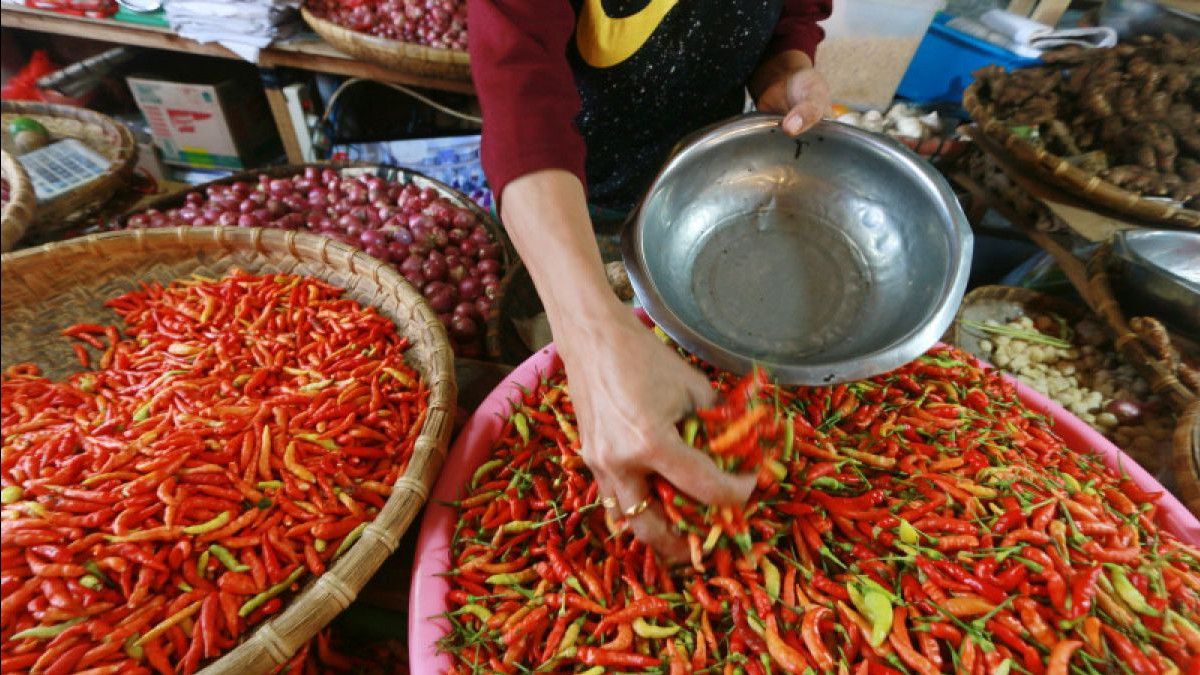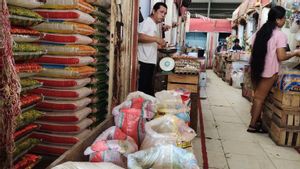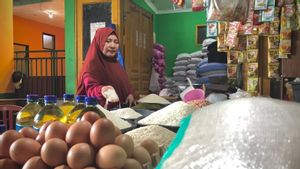JAKARTA - The Ministry of Agriculture (Kementan) stated that the increase in chili prices can be overcome by allocating yields. Where, the surplus area allocates yields to areas that lack supply.
"In every inflation meeting, it has been stated that regarding the high price of chili, it occurs due to distribution constraints," said Director of Vegetables and Drug Plants, Director General of Horticulture Ministry of Agriculture (Kementan) Andi Muhammad Idil Fitri quoting Antara.
He said that therefore, areas experiencing a surplus of chili commodities must allocate their harvests to areas that lack chili supply.
"In terms of cultivation, there are many production centers. So to overcome distribution constraints, regions that experience a deficit in chili supply can be met or subsidized from surplus areas," he said.
According to him, to support the smooth implementation of equitable distribution, support is also needed in terms of maintained mobility.
"There must be someone who facilitates mobilization, because this chili must be distributed and there must be also those who buy there," he said.
He continued that currently chili commodity centers are still concentrated in Java, especially in East Java, Central Java, and West Java.
Meanwhile, in Lampung Province, chili center areas are in West Lampung, Mesuji and Pesawaran Regencies, but in Lampung most of them are still production deficits.
"To equalize chili cultivation, there is a program called the inflation program, one of which is in Kalimantan, but it is still limited to only 1,300 hectares with a potential harvest of 7,500 tons. The hope is that this chili cultivation can be evenly distributed so that prices can be stable," he added.
SEE ALSO:
A similar response related to maintaining the stability of chili prices was also stated by the Main Secretary of the National Food Agency (Bapanas) Sarwo Edhy.
"There are several commodities whose prices are quite high, one of which is curly red chilies and cayenne peppers. Those that have experienced an average increase of more than 10 percent," said Sarwo Edhy.
He said to stabilize chili prices again in the community, the government would establish communication with producers to allocate part of the harvest in areas experiencing a chili surplus to areas that lacked supply.
"In Bapanas, there is a budget for facilitating this distribution that can be used to allocate chilies from surplus areas to chili deficit areas," he said again.
It is known that in one of the traditional markets in Bandarlampung City, the Way Halim People's Market, the price of red chilies began to gradually fall, from the previous price of almost Rp90 thousand per kilogram for red chilies to Rp78 thousand per kilogram, while cayenne pepper from Rp100 thousand per kilogram to Rp80 thousand per kilogram.
The English, Chinese, Japanese, Arabic, and French versions are automatically generated by the AI. So there may still be inaccuracies in translating, please always see Indonesian as our main language. (system supported by DigitalSiber.id)
















